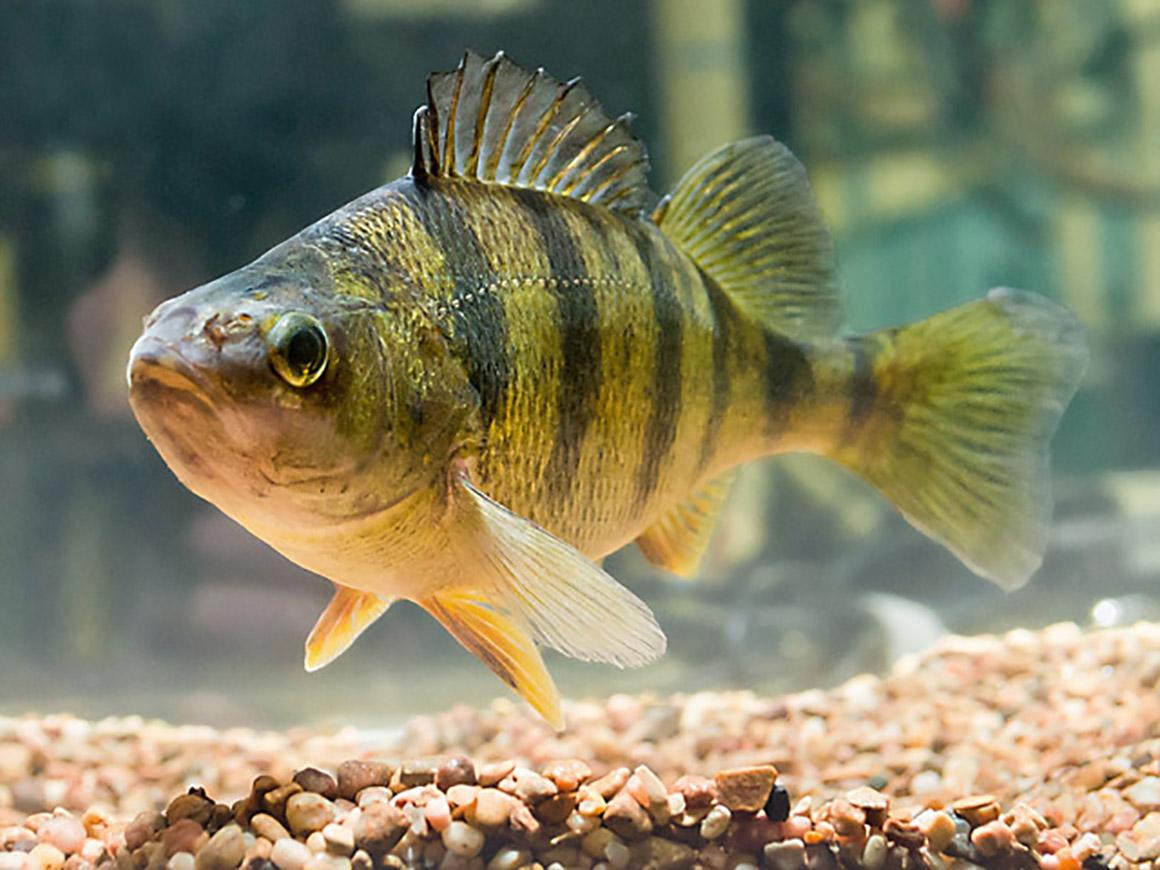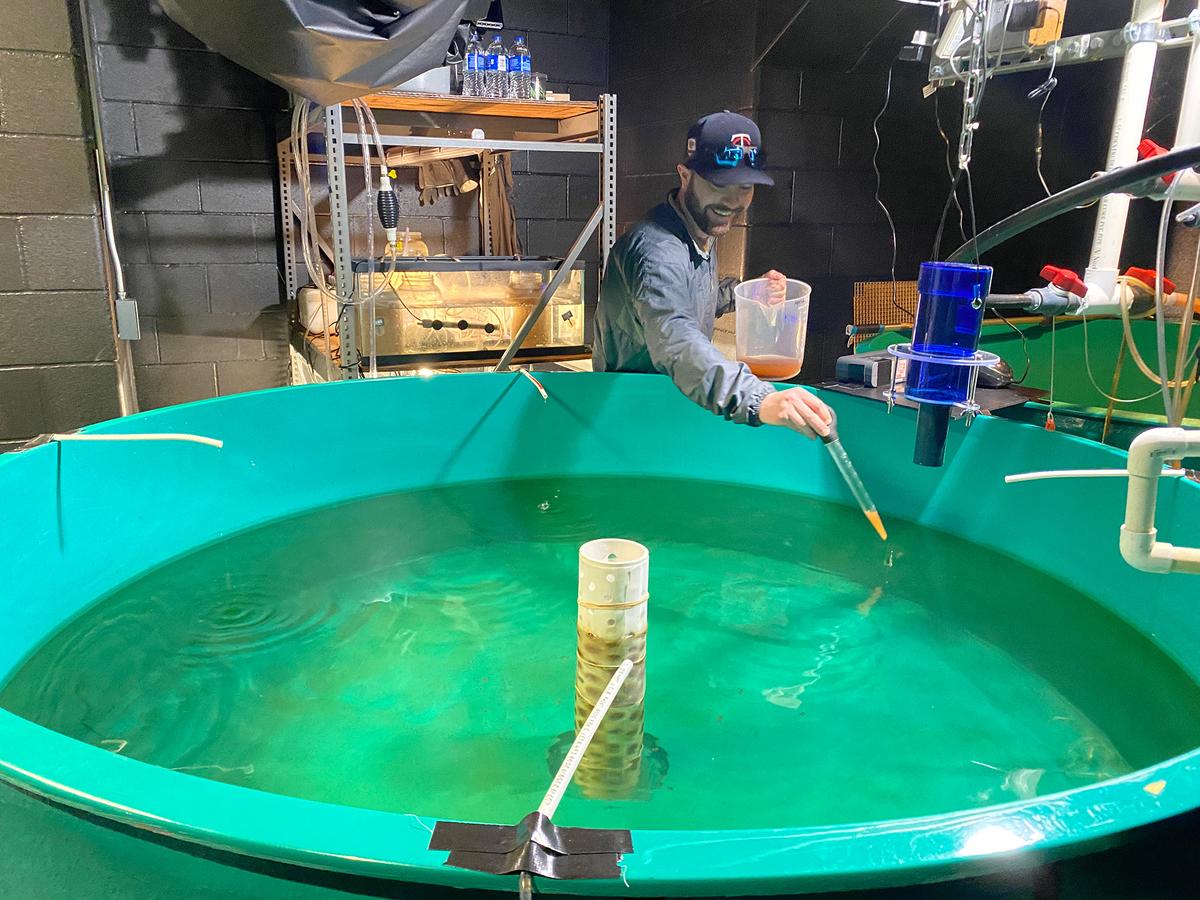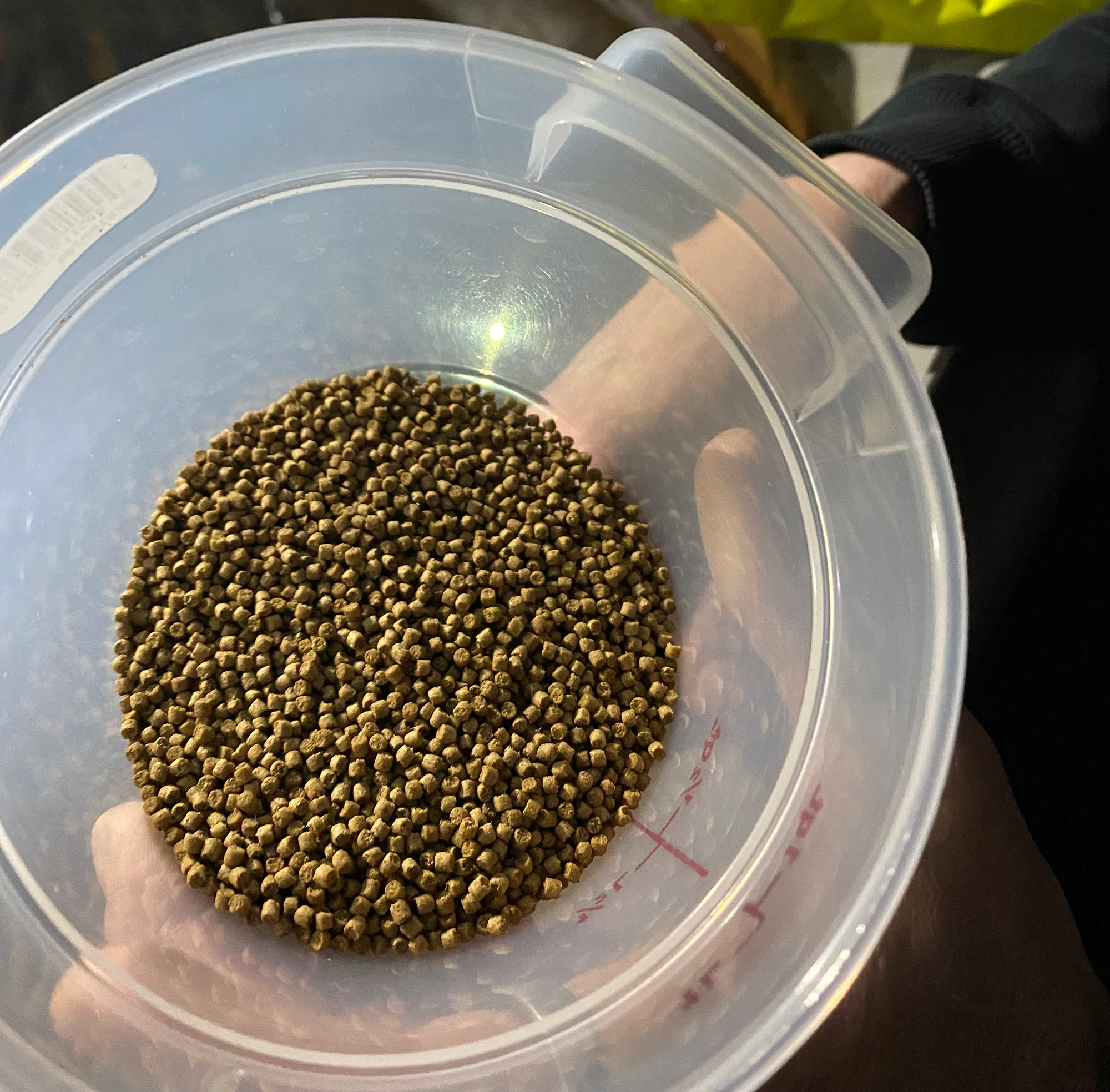I was born in Minnesota and was an avid angler in my youth and Walleye (Sander vitreus) was always my catch of choice. A firm and flaky Walleye fillet made a fantastic meal, whether it was fresh caught in the lakes of northern Minnesota or at a restaurant closer to home in the Twin Cities.
Walleye is not the only flaky and delicious fish on the menu these days. Yellow Perch (Perca flavescens) is a tasty and popular option and due to high demand and low supply these fish are currently fetching up to an extraordinary $38 per pound!
This wasn’t always the case. During the early to mid-20th century, vast numbers of wild Yellow Perch were harvested by both recreational and commercial fishers throughout the Great Lakes region. Over the last 50 years, overfishing and low recruitment (which means survival of a fish to market size) drastically reduced wild Yellow Perch populations and harvest. In 2022, Yellow Perch support a much smaller commercial fishery and have emerged as a viable food fish species for aquaculture, which can include breeding, raising, and then harvesting fish, shellfish, and aquatic plants. Basically, it's farming in water. The development of aquaculture techniques to safely, efficiently, and locally grow Yellow Perch by producers and researchers and organizations like Sea Grant is ongoing.
I’m part of a project team from the University of Minnesota Sea Grant (MNSG) that is raising Yellow Perch to compare methods and production costs between two common fish-rearing systems: recirculating aquaculture systems (RAS) and flow-through systems.
Historically, most Yellow Perch producers used large outdoor ponds or flow-through systems which required a lot of water, were hard to clean, and were difficult to remove fish waste from. With the development of indoor RAS, water can be cleaned and reused with help from specific types of bacteria (nitrifying bacteria). These bacteria convert the harmful waste products (i.e., ammonia and nitrite) naturally created by the fish, into a less toxic form of nitrogen (i.e., nitrate). RAS also helps to isolate the fish from changing environmental conditions such as water temperatures that are too hot or too cold or predators and can reduce disease outbreaks.
In 2021, MNSG partnered with a local aquaculture expert, Chad Hebert, to help fine-tune our Yellow Perch aquaculture methods and contribute to the development of an aquaculture producers’ user manual. We set up a RAS at the Minnesota Aquatic Invasive Species Center Containment Lab on the St. Paul campus of the University of Minnesota. In the spring of 2022, we successfully incubated and hatched our second batch of thousands of Yellow Perch eggs and grew them from larval fish to juvenile fish that by mid-July were just under two inches in length. Growing them to this size took a lot of effort and commitment.
In the wild, recently hatched Yellow Perch larvae feed on a wide array of microscopic aquatic animals known as zooplankton. In our RAS, we offer our larval Yellow Perch live feed such as rotifers and Artemia (i.e., brine shrimp), similar to what they would find in the wild, until they’re large enough to eat dry pelleted feed. The MNSG project team is not only growing fish, but we’re also growing different types of live food, each of which presents their own challenges.
Our Yellow Perch won’t reach a harvest size of 6-8 inches for 8-10 months.
When the project is completed in late 2023, the project team will produce a detailed manual for how to raise Yellow Perch in a RAS for fish producers. Our goal is to develop methods and cost estimates accessible for small- to medium-size producers to hatch, feed-train, and rear Yellow Perch to fingerling and market size in a RAS. If we are successful, the manual will offer information that producers can use to increase local production of fresh, delicious Yellow Perch. Local fish production may also help address issues of food insecurity throughout the Great Lakes region.
MNSG’s Yellow Perch project is funded by a $134,879 grant from the National Sea Grant Office and is one of 13 nationwide projects designed to address ongoing and long-term impacts associated with the COVID-19 pandemic on seafood resources, including aquaculture and the connection between aquaculture and wild-caught fisheries.
For more information or to speak with a member of the project team, contact MNSG Fisheries and Aquaculture Extension Educator Amy Schrank, MNSG Interim Extension Program Leader Don Schreiner, or MNSG Aquaculture Extension Associate Kieran Smith.
Minnesota Sea Grant monthly newsletter:
Sign up to receive Minnesota Sea Grant’s monthly program highlights newsletter to stay in the loop about all our community projects.
"fish" - Google News
July 26, 2022 at 05:38AM
https://ift.tt/Z3XO8fg
A Firm and Flaky Fish Tale - Minnesota Sea Grant
"fish" - Google News
https://ift.tt/n83yZ4S
https://ift.tt/TePRzIL
Bagikan Berita Ini


















0 Response to "A Firm and Flaky Fish Tale - Minnesota Sea Grant"
Post a Comment